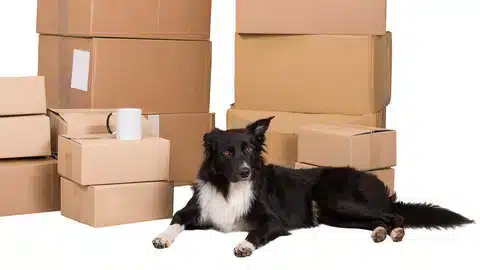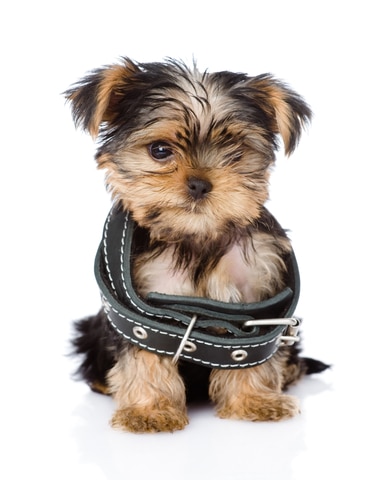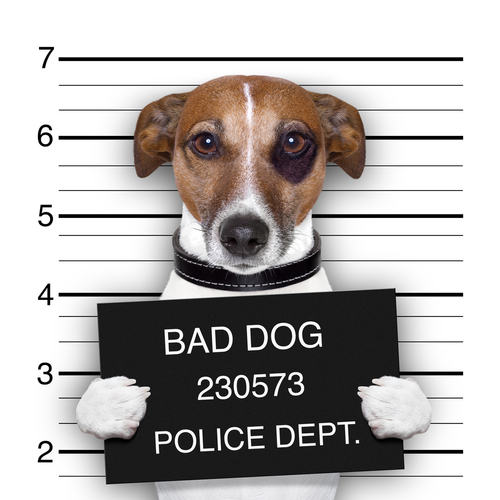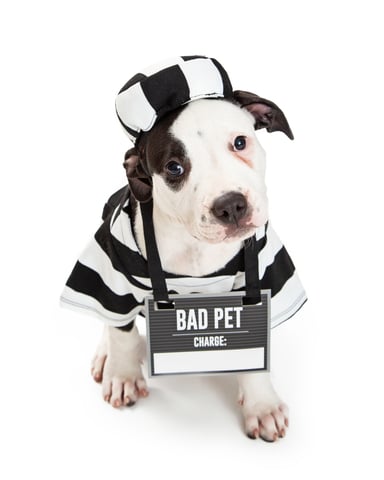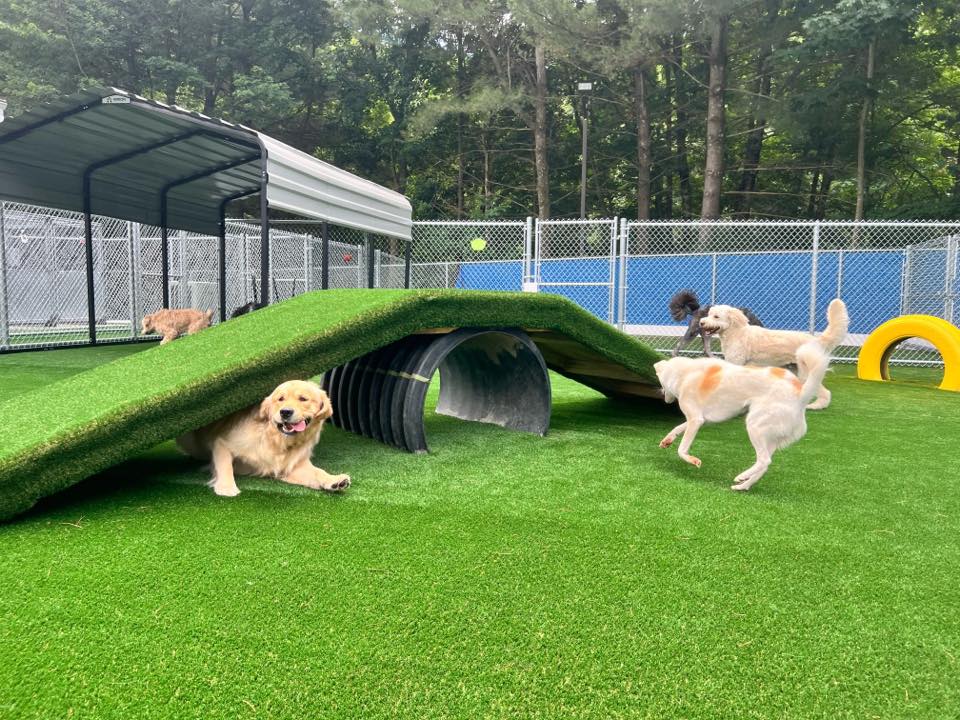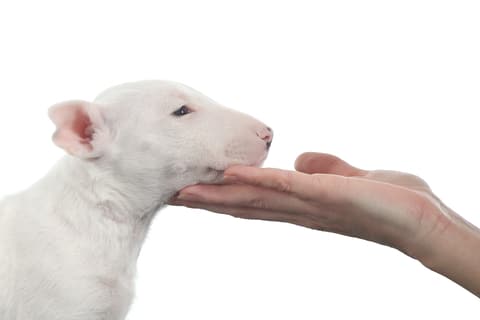An easy way to teach "Give"
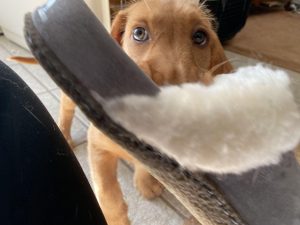
Having a hound puppy is a new experience for me. Brio isn’t my first hound. I had a basset hound for 12 years, but she was a year old when I first met her. Having 12-week old Brio, a Basset Fauve de Bretagne, is great fun, but would be frustrating if I weren’t prepared for his hound-i-ness.
Hounds have a reputation for being “stubborn.” It isn’t stubbornness, though. Rather, it’s that their inherent instincts are to hunt. Hounds are genetically programmed to hunt prey either by following odor (scent hounds include bassets, beagles, bloodhounds and dachshunds) or by seeing and chasing moving prey (sight hounds such as greyhounds, Afghans, deerhounds and basenjis). This means that the dog’s (or puppy’s) primary motivation is to hunt rather than to work cooperatively with a human.
Working with humans is the genetic propensity of herding dogs like border collies, shepherds or shelties, or of sporting dogs like retrievers and spaniels.
However, this doesn’t mean that hounds won’t respond to humans rather than to sights or scents, but it requires training. Fortunately, my wee hound, Brio, is interested in food treats as reinforcement, making his training much easier.
Because puppies will mouth or chew anything within reach, it’s hugely important that they learn to willingly give things up, so today’s lesson is on releasing objects Brio has in his mouth.
The very first time I went to take something from Brio, he played keep-away — rushing away from me with my slipper in his mouth. Message to self: Put your slippers out of reach. Bigger message to self: Teach Brio two games! Game 1 is “Give it up to Get it Back.” Game 2 is “Give it up to Get Something Better!”
Game 1 simply means that when the puppy drops or gives you what he has in his mouth, you offer it right back to him as a game—perhaps tossing it a short distance away. Game 2 is trading the valued object the puppy has for a higher value object or treat.
This morning Brio and I played these games with a sock I dropped. Before I was even aware that the sock had hit the floor, Brio grabbed it and ran. I simply followed and asked him to give me the sock.
Taking something from a puppy who wants to keep it does require some patience. I gently held Brio with one hand while holding the sock in the other. I calmly said, “Give,” and waited. At first it took a few seconds before he relaxed his grip on the sock. Then I immediately tossed it a short distance and excitedly said, “Get it!” which he did. I repeated taking and tossing it four or five times, and with each repetition, the time frame before he willingly gave it up got shorter. He was learning that it is more fun to play the game than to simply hold whatever he has. Finally, I ended Game 1 with Game 2 — I kept the sock and gave him a treat.
We play this game with toys, too, keeping in mind that whatever I trade for in Game 2 has to be worth giving up what he has for what I have.
Just as with people, there’s a hierarchy of treat value—spinach versus chocolate, ice cream versus oatmeal. It isn’t that oatmeal or spinach aren’t good. Rather it’s whether I would go out of my way for a spinach reward versus chocolate or ice cream.
For dogs, the treat hierarchy ranges from a piece of dry dog food or dog biscuit to cheese, chicken or roast beef. For instance, a piece of kibble might be an OK reward for giving up a squeaky toy. But when I’m asking him to give up something tasty, such as a marrow bone, the trade should be for a higher value treat. Otherwise, the puppy will want to keep the valued object more than the lower value treat.
If you cannot take the object from the puppy’s mouth, drop the high value treat on the floor so the puppy has to let go. While he’s eating the good stuff, remove the object and give the puppy more rewards.
It’s important for a puppy to learn to willingly give up whatever he has in his mouth so if he ever has something dangerous, such as a chicken or turkey bone, it’s no big thing to get it from him. You simply say “Give” and offer him something really, really good. This training is not only potentially life-saving, it is great fun!
